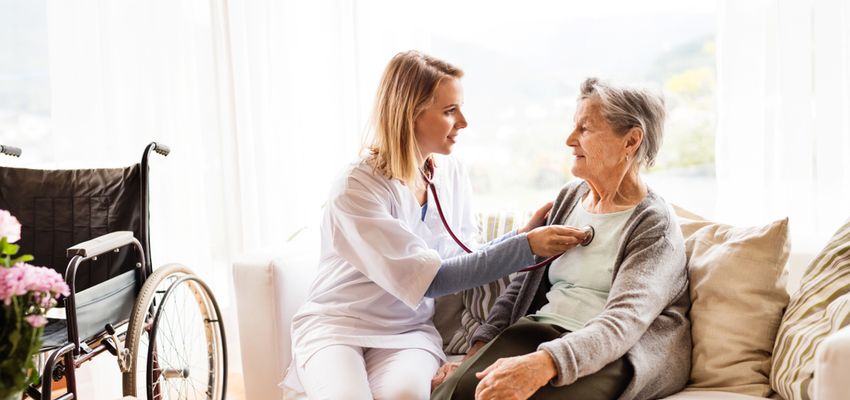Blog

Senior Safety: Tips For Preventing Falls And Accidents
August 14, 2025 0 Comment Category: Care Center
Senior Assisted Living
As seniors age, maintaining independence and safety becomes increasingly important. One of the most common and serious risks older adults face is falling. According to the Centers for Disease Control and Prevention (CDC), millions of seniors experience falls each year, often leading to injuries such as hip fractures, head trauma, or reduced mobility. The good news is that many falls and accidents are preventable with the right strategies.
This article highlights effective fall prevention tips and safety measures to help seniors live confidently and comfortably while reducing risks at home or in senior care facilities.
Why Fall Prevention Is Crucial for Seniors
-
High Risk of Injury: Falls are a leading cause of injury-related hospital admissions for seniors.
-
Loss of Independence: Serious falls can limit mobility and make everyday activities challenging.
-
Emotional Impact: The fear of falling often causes seniors to withdraw from social and physical activities, which can negatively impact their overall well-being.
-
Financial Strain: Medical costs from fall-related injuries can place a burden on families.
By taking proactive steps, families and caregivers can create safer environments and encourage healthier lifestyles that minimize fall risks.
Home Safety Modifications
The home environment plays a major role in senior safety. Simple changes can dramatically lower the risk of falls:
1. Remove Tripping Hazards
-
Clear walkways of clutter, cords, and loose rugs.
-
Secure carpets with non-slip pads.
-
Keep frequently used items within easy reach to avoid unnecessary climbing.
2. Improve Lighting
-
Install bright, energy-efficient lighting in hallways, staircases, and entryways.
-
Use nightlights in bedrooms and bathrooms.
-
Ensure switches are easily accessible or install motion-sensor lighting.
3. Bathroom Safety
-
Add grab bars near toilets and showers.
-
Place non-slip mats inside and outside the bathtub.
-
Consider a walk-in shower or tub with a built-in seat.
4. Stair Safety
-
Ensure staircases have sturdy handrails on both sides.
-
Mark the edges of steps with contrasting tape to improve visibility.
-
Keep stairs free from objects, shoes, or bags.
5. Furniture and Layout
-
Arrange furniture to allow wide, clear walking paths.
-
Avoid chairs or tables with sharp corners.
-
Choose stable chairs with armrests to make sitting and standing easier.
Physical Health and Mobility
Strength, balance, and flexibility decline with age, increasing the risk of falls. Seniors can improve stability by incorporating healthy habits:
1. Exercise Regularly
-
Activities like walking, tai chi, and gentle yoga improve balance and coordination.
-
Strength training builds muscle to support better mobility.
-
Simple balance exercises, such as standing on one leg, can reduce fall risk.
2. Healthy Nutrition
-
A calcium- and vitamin D-rich diet helps maintain strong bones.
-
Staying hydrated prevents dizziness caused by dehydration.
-
Maintaining a healthy weight supports joint and muscle health.
3. Regular Health Screenings
-
Annual vision and hearing checks detect impairments that affect balance.
-
Monitoring blood pressure, medications, and chronic conditions helps prevent dizziness or fainting spells.
-
Consulting with doctors about bone density tests can help identify osteoporosis early.
4. Mobility Aids
-
Encourage proper use of canes, walkers, or braces if prescribed.
-
Ensure walking aids are correctly fitted and maintained.
-
Teach safe use of aids to avoid accidents from misuse.
Medication Management
Many seniors take multiple medications, which may cause dizziness, fatigue, or confusion. To reduce risks:
-
Review medications regularly with a healthcare provider.
-
Be aware of side effects that may increase fall risks.
-
Take medications consistently to avoid missed doses or overdoses.
-
Keep medicines organized in labeled containers or pill organizers.
Footwear and Clothing Safety
What seniors wear can significantly affect balance and safety:
-
Shoes: Choose sturdy, non-slip shoes with supportive soles. Avoid slippers, flip-flops, or heels.
-
Clothing: Avoid long, loose garments that drag on the floor and may cause tripping.
-
Socks: Use non-slip socks if shoes are not worn indoors.
Technology and Safety Tools
Modern technology provides additional support for senior safety:
-
Medical Alert Systems: Wearable devices allow seniors to call for help after a fall.
-
Smart Home Devices: Voice-activated assistants and motion sensors add convenience and safety.
-
Fall Detection Apps: Smartphones and smartwatches can detect sudden movements and alert caregivers.
-
Surveillance Cameras: Provide peace of mind for family members checking on elderly loved ones.
Caregiver and Community Support
Seniors thrive when they feel supported. Caregivers and community resources play a key role in fall prevention:
-
Caregiver Training: Learn safe transfer techniques, such as assisting with standing or moving between beds and chairs.
-
Community Programs: Many senior centers offer fall-prevention workshops or exercise classes.
-
Regular Communication: Families should maintain open conversations about fears or concerns related to falling.
Emergency Preparedness
Despite best efforts, accidents can still happen. Preparing for emergencies ensures quick responses:
-
Keep emergency phone numbers visible in multiple rooms.
-
Encourage seniors to carry a cell phone or an alert device at all times.
-
Create a plan for who to call if a fall occurs.
-
Teach seniors how to safely get up after a minor fall or how to stay calm while waiting for help.
Final Thoughts
Falls and accidents among seniors are not inevitable; they are largely preventable. By combining environmental modifications, healthy lifestyle choices, technology, and caregiver support, families can create safer surroundings that reduce risks.
Fall prevention isn’t just about avoiding injury; it’s about empowering seniors to live with confidence, independence, and peace of mind. Proactive safety measures today can make a world of difference in protecting the health and happiness of your loved ones tomorrow.

leave A comment